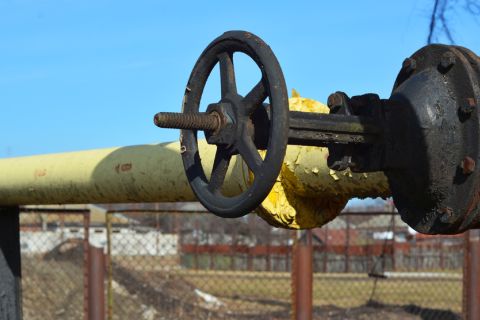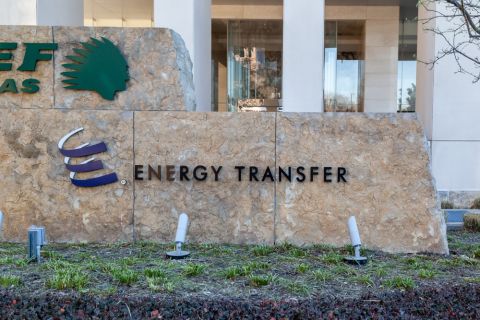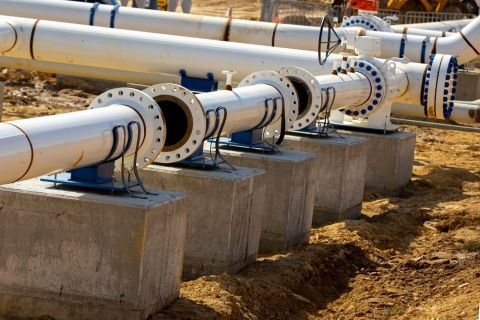California will block the transportation through its state of petroleum from new offshore oil rigs, officials told Reuters on Feb. 7, a move meant to hobble the Trump administration’s effort to vastly expand drilling in U.S. federal waters.
California’s plan to deny pipeline permits for transporting oil from new leases off the Pacific Coast is the most forceful step yet by coastal states trying to halt the biggest proposed expansion in decades of federal oil and gas leasing.
Officials in Florida, North and South Carolina, Delaware and Washington, have also warned drilling could despoil beaches, harm wildlife and hurt lucrative tourism industries.
“I am resolved that not a single drop from Trump’s new oil plan ever makes landfall in California,” Lt. Governor Gavin Newsom, chair of the State Lands Commission and a Democratic candidate for governor, said in an emailed statement.
The commission sent a letter on Feb. 7 to the U.S. Interior Department’s Bureau of Ocean Energy Management (BOEM) urging the bureau’s program manager Kelly Hammerle to withdraw the draft proposal, saying the public did not have an adequate opportunity to provide input on the plan.
“It is certain that the state would not approve new pipelines or allow use of existing pipelines to transport oil from new leases onshore,” the commission wrote in the letter seen by Reuters.
California has clashed repeatedly with President Donald Trump’s administration over a range of other issues since last year, from climate change to automobile efficiency standards to immigration.
The Interior Department last month announced its proposal to open nearly all U.S. offshore waters to oil and gas drilling, sparking protests from coastal states, environmentalists and the tourism industry.
Governors from nearly every U.S. coastal state except Alaska and Maine expressed opposition, and even Alaska's governor requested sensitive areas be removed.
The proposal also comes amid low U.S. oil industry demand for new offshore leases, as drillers focus on cheaper and highly-productive wells onshore that have pushed U.S. production over 10 million barrels per day for the first time since 1970.
Heather Swift, spokeswoman for Secretary of the Interior Ryan Zinke, said developing the five-year plan for offshore oil and gas leases is “a very open and public process.”
“Secretary Zinke looks forward to meeting with more Governors and other coastal representatives who want to discuss the draft program,” she said, adding the bureau “has planned 23 public meetings, in our coastal states, to secure feedback directly from citizens.”
In an interview on Feb. 6, William Brown, the Bureau of Ocean Energy Management’s chief environmental officer, said state input is taken seriously, and has resulted in past drilling plans being scaled back. He said the approval process would take two years and include an environmental review.
Protests
Trump has said more offshore drilling would boost the U.S. economy and national security by reducing reliance on imported oil.
Opponents of offshore drilling have complained that Congress has passed no new safety standards since BP Plc’s Deepwater Horizon explosion and oil spill in the Gulf of Mexico in 2010. It took months to stop that leak, which became the largest oil spill in American history, despoiling the environment of Gulf Coast states and causing billions of dollars in economic damage.
Offshore drilling has been restricted in California since a 1969 oil spill off the coast of Santa Barbara. In 2015, another spill in Santa Barbara County sent as much as 2,400 barrels of oil (101,000 gallons or 382,000 liters) onto the coast and into the Pacific, leaving slicks that stretched over 14 km (9 miles).
Major oil companies, like Chevron Corp., have long since abandoned their efforts in California's offshore region, despite its estimated 250 million barrels of proven oil reserves, due in part to legislative and political hurdles and easier prospects elsewhere.
Chevron gave away the U.S. Geological Survey seismic data on offshore California and other parts of the U.S. West Coast for research use in 2005, deeming it no longer commercially useful.
Neal Kirby, a spokesman for the Independent Petroleum Association of America, which represents small and mid-sized drilling companies, said his members support the administration’s drilling plan.
But, he said that the industry was primarily interested in the Eastern Gulf of Mexico, a region close to existing oil infrastructure and highly-productive fields. He said if California bars oil from passing through pipelines, companies would be even less likely to seek new offshore leases there.
A number of other states have asked the Interior Department to exempt them from the drilling plan. So far, Secretary Zinke has said he would exempt Florida, which borders the Eastern Gulf and the Southeastern Atlantic, to protect its tourism industry and he has promised to hold discussions with other states that have expressed concerns.
On Jan. 24, U.S. lawmakers from Florida sent Zinke a letter pressing him to honor his pledge, noting that the acting chief of the Bureau of Ocean Energy Management had said Florida's coast is "still under consideration for offshore drilling."
Environmentalists and some elected officials plan to protest the drilling plan at a public meeting on Feb. 8 in Sacramento.
Recommended Reading
Enbridge Announces $500MM Investment in Gulf Coast Facilities
2024-03-06 - Enbridge’s 2024 budget will go primarily towards crude export and storage, advancing plans that see continued growth in power generated by natural gas.
Apollo Buys Out New Fortress Energy’s 20% Stake in LNG Firm Energos
2024-02-15 - New Fortress Energy will sell its 20% stake in Energos Infrastructure, created by the company and Apollo, but maintain charters with LNG vessels.
Summit Midstream Sells Utica Interests to MPLX for $625MM
2024-03-22 - Summit Midstream is selling Utica assets to MPLX, which include a natural gas and condensate pipeline network and storage.
Post $7.1B Crestwood Deal, Energy Transfer ‘Ready to Roll’ on M&A—CEO
2024-02-15 - Energy Transfer co-CEO Tom Long said the company is continuing to evaluate deal opportunities following the acquisitions of Lotus and Crestwood Equity Partners in 2023.
TC Energy, Partner Sell Portland NatGas Transmission System for $1.14B
2024-03-04 - Analysts expect TC Energy to make more divestitures as the Canadian infrastructure company looks to divest roughly $2.21 billion in assets in 2024 and lower debt.





